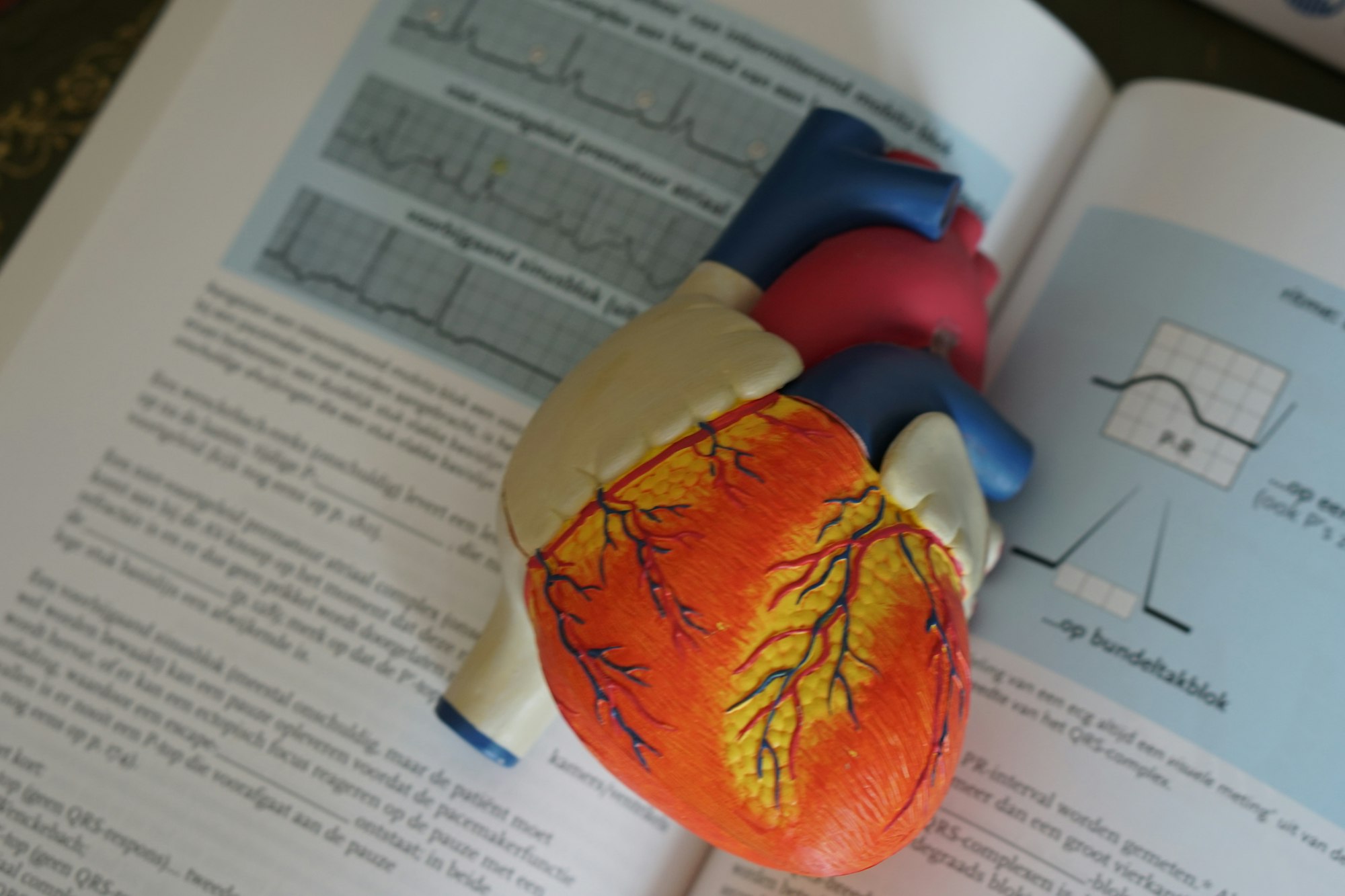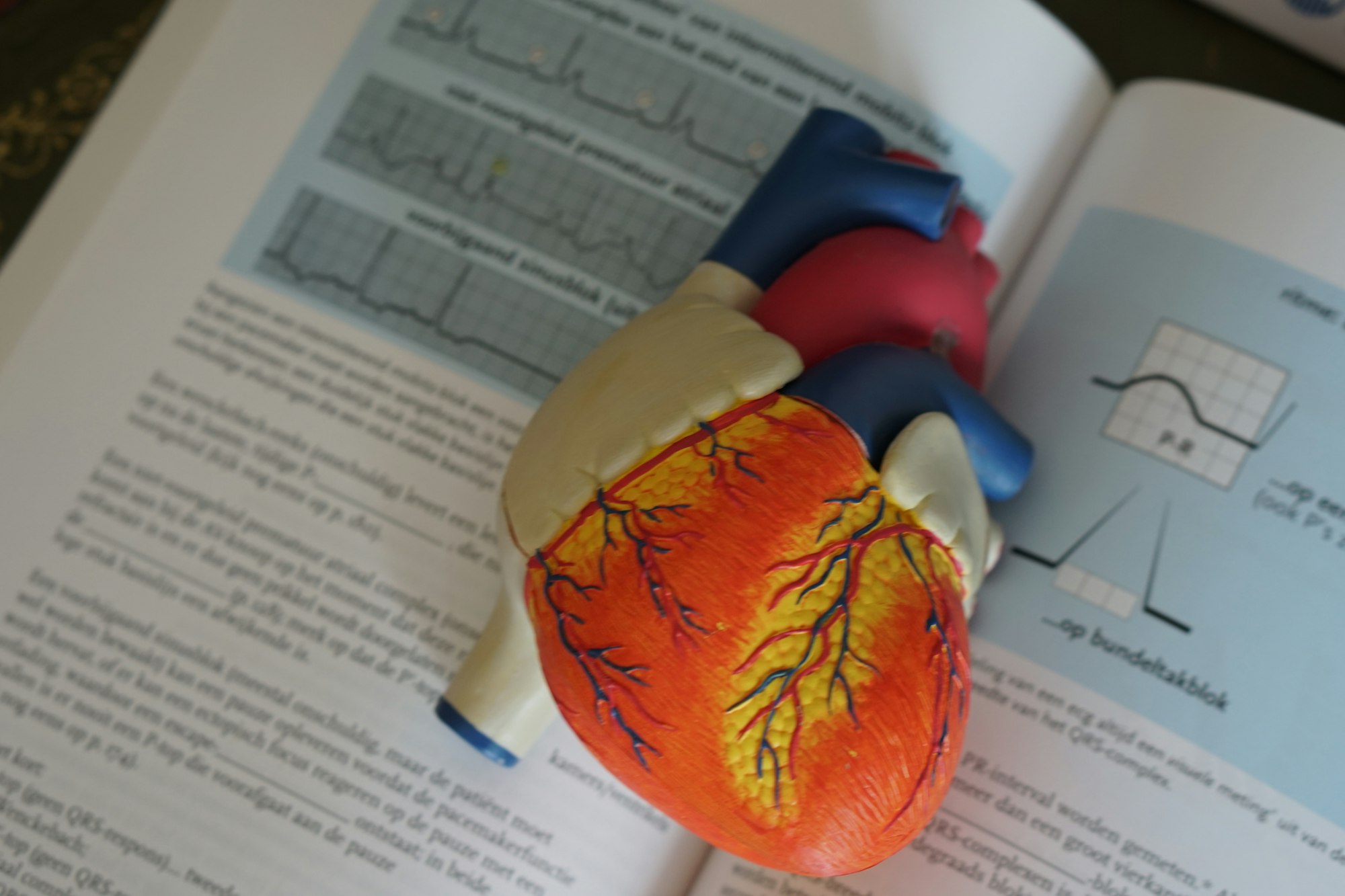Microbiology, a key subject in the medical curriculum, focuses on the study of microscopic organisms such as bacteria, viruses, fungi, and parasites. As a medical student, understanding microbiology is essential for diagnosing, treating, and preventing infectious diseases. This knowledge also provides a solid foundation for comprehending the complex interactions between microbes and the human body, a crucial aspect of patient care.
This article aims to help medical students excel in microbiology by offering valuable resources, study techniques, and tips for remembering essential concepts long-term. By following these guidelines, you'll be better equipped to tackle the challenges of microbiology and thrive in your medical career.
Top Resources for Medical Students to Study Microbiology
A. Recommended Textbooks and Study Guides

- Medical Microbiology by Patrick R. Murray, Ken S. Rosenthal, and Michael A. Pfaller - This comprehensive textbook covers essential topics in medical microbiology, providing a solid foundation for understanding the subject.
- Review of Medical Microbiology and Immunology by Warren Levinson - A concise and high-yield review guide that helps medical students prepare for exams by focusing on the most important concepts and clinical applications of microbiology and immunology.
- Clinical Microbiology Made Ridiculously Simple by Mark Gladwin and William Trattler - This easy-to-understand guide uses humor, mnemonics, and illustrations to simplify complex concepts, making it a favorite among medical students.

B. Online Platforms and Courses
- SketchyMicro - This innovative platform uses visual mnemonics, or "sketches," to teach medical microbiology in a memorable and engaging way.
- Khan Academy - A well-known educational platform offering free videos on various topics, including microbiology and immunology.
- Coursera - Online courses in microbiology, often taught by professors from prestigious universities, are available for free or at a low cost, providing a flexible way to learn the subject.
- Youtube - Online lectures and videos are getting better and more proficient.

C. Educational Apps and Tools
- Anki - A flashcard app that uses spaced repetition to improve long-term retention of information. Many medical students create and share microbiology flashcard decks for efficient and effective studying.
- Mnemonic Dictionary - An online platform where users can find and share mnemonics for various topics, including medical microbiology.
- Microbe Invader - A web-based game designed to help medical students learn about microbes and their associated diseases in a fun and interactive way.

Essential Study Techniques for Mastering Microbiology
Mastering microbiology as a medical student requires an understanding of complex concepts, memorization of numerous facts, and the ability to apply this knowledge in a clinical setting. The following study techniques will help you learn the subject effectively and efficiently.
A. Active Learning Strategies
Active learning strategies involve engaging with the material and processing it deeply, which helps improve understanding and retention. Here are some active learning techniques to apply when studying microbiology:
- Self-explanation - After reading or watching a lecture, try to explain the concepts to yourself in your own words. This will help reinforce your understanding and reveal any gaps in your knowledge.
- Teaching others - Teaching a concept to a friend or family member can solidify your understanding and help you identify areas where you need more practice.
- Practice questions - Regularly test your knowledge with practice questions, such as those found in textbooks or online resources. This not only helps you review the material but also familiarizes you with the types of questions you may encounter in exams.
- Summarizing and note-taking - Summarize key points from your readings or lectures in your own words, and take notes using techniques such as the Cornell Method, which encourages critical thinking and synthesis of information.
B. Time Management and Study Schedules
Effective time management is crucial for learning complex subjects like microbiology. Here are some tips to help you manage your study time:
- Create a study schedule - Plan your study sessions in advance, and allocate time to specific topics or tasks, such as reviewing lecture notes, reading textbooks, or practicing questions.
- Break tasks into manageable chunks - Instead of trying to learn an entire chapter in one sitting, break it into smaller sections, and tackle them one at a time.
- Use the Pomodoro Technique - Work in focused, 25-minute intervals, called "Pomodoros," followed by a short break. After completing four Pomodoros, take a longer break. This technique can improve concentration and productivity while preventing burnout.
C. Collaborative Learning and Study Groups
Working with others can enhance your learning experience and provide opportunities for sharing knowledge and strategies. Consider the following collaborative learning techniques:
- Form a study group - Regularly meet with a group of classmates to review material, discuss concepts, and work through practice questions together.
- Peer teaching - Take turns teaching each other different topics, as the process of explaining concepts to others can deepen your understanding.
- Group problem-solving - Tackle complex problems or case studies as a team, which can help you learn from others' perspectives and approaches.
D. Building a Strong Foundation
A solid understanding of the fundamentals is crucial for mastering microbiology. Make sure to invest time in learning the basics, such as bacterial structure and classification, as this will make it easier to grasp more advanced concepts.
- Review foundational concepts regularly - Regularly revisit basic concepts to reinforce your understanding and ensure they are not forgotten.
- Connect new information to prior knowledge - When learning a new topic, try to relate it to what you already know. This will help you build a mental framework for understanding and remembering the material.
- Use analogies and metaphors - Analogies and metaphors can help you understand complex concepts by relating them to familiar ideas. For example, you might think of a bacterial cell wall as a protective "armor" that keeps the cell safe from its environment. SketchyMacro is a great source that uses all of these.
By applying these study techniques, you'll be well on your way to mastering microbiology and excelling in your medical studies.
Key Topics in Microbiology for Medical Students
Microbiology is a vast field, but there are certain topics that are particularly relevant for medical students. Gaining a strong grasp of these key areas will be invaluable for your understanding of infectious diseases and clinical practice. Here, we highlight and elaborate on some of the most important subjects in medical microbiology.
A. Bacterial Structure, Classification, and Identification
A fundamental understanding of bacterial structure and classification is essential for medical students, as it forms the basis for diagnosing and treating bacterial infections. Key concepts in this area include:
- Cell wall structure - The differences between Gram-positive and Gram-negative bacteria, including their cell wall composition, staining properties, and implications for treatment.
- Bacterial shapes and arrangements - The various morphologies (cocci, bacilli, spirilla) and groupings (chains, clusters) of bacteria, which can aid in their identification.
- Methods of bacterial identification - Techniques used to identify bacteria, such as culture, microscopy, biochemical testing, and molecular methods.
- Bacterial taxonomy - The classification of bacteria based on their characteristics, such as genus and species, which can help predict their pathogenicity, preferred environment, and susceptibility to antibiotics.
B. Antimicrobial Resistance and Pharmacology
With the rise of antibiotic resistance, understanding the mechanisms of antimicrobial action and resistance is crucial for medical students. Key concepts in this area include:
- Mechanisms of antibiotic action - The various ways in which antibiotics target bacterial cells, such as inhibiting cell wall synthesis, protein synthesis, or DNA replication.
- Mechanisms of antimicrobial resistance - How bacteria develop resistance to antibiotics, including genetic mutations, enzymatic inactivation, and efflux pumps.
- Pharmacokinetics and pharmacodynamics - The factors that influence the absorption, distribution, metabolism, and excretion of antibiotics, as well as the relationship between drug concentration and antimicrobial effect.
- Antibiotic stewardship - The principles of appropriate antibiotic use, such as selecting the correct drug, dose, and duration, to minimize the development of resistance and ensure optimal patient outcomes.
C. Viruses and their Impact on Human Health
Viruses play a significant role in human disease, so medical students must be familiar with their properties, classification, and methods of transmission. Key concepts in this area include:
- Viral structure and classification - The basic structure of viruses, including their capsids, envelopes, and genome types, as well as their classification based on factors such as morphology and genetic material.
- Viral replication and life cycles - The various ways in which viruses replicate within host cells, including lytic and lysogenic cycles, and the stages of viral infection (attachment, penetration, uncoating, replication, assembly, and release).
- Major viral families - The characteristics, pathogenesis, and clinical manifestations of important viral families, such as Herpesviridae, Orthomyxoviridae, and Retroviridae.
- Viral diagnostics and treatment - Methods for detecting and identifying viral infections, as well as the principles of antiviral therapy, including the use of antiviral drugs and vaccines.
D. Fungi, Parasites, and Other Microorganisms
Medical students should also be familiar with the other microorganisms that can cause human disease, such as fungi and parasites. Key concepts in this area include:
- Fungal classification and structure - The basic structure and classification of fungi, including yeasts and molds, as well as the factors that contribute to their pathogenicity.
- Parasite classification and life cycles - The classification of parasites, including protozoa, helminths, and ectoparasites, as well as their complex life cycles, which often involve multiple hosts and stages of development.
- Fungal and parasitic infections - The clinical manifestations, diagnosis, and treatment of common fungal and parasitic infections, such as candidiasis, aspergillosis, malaria, and helminthic infections.
- Other microorganisms - An understanding of other microorganisms that can impact human health, such as prions, which are responsible for transmissible spongiform encephalopathies, and the role of the human microbiome in health and disease.
E. Host-Microbe Interactions and the Immune System
A crucial aspect of medical microbiology is understanding the complex interactions between microbes and the human body, as well as the body's defenses against infection. Key concepts in this area include:
- Innate and adaptive immunity - The components and functions of the innate and adaptive immune systems, including physical barriers, cellular defenses, and the production of antibodies.
- Immune evasion strategies - The various mechanisms employed by microorganisms to evade the host's immune system, such as antigenic variation, immune suppression, and molecular mimicry.
- Immunopathology - The study of how immune responses can contribute to disease, such as through hypersensitivity reactions, autoimmunity, and immunodeficiency.
- Vaccines and immunization - The principles of vaccination, including the different types of vaccines (e.g., live attenuated, inactivated, subunit) and their mechanisms of action, as well as vaccination schedules and the concept of herd immunity.
By focusing on these key topics in microbiology, medical students will be well-prepared to understand and manage infectious diseases in their future clinical practice. Keep in mind that microbiology is a rapidly evolving field, so staying up-to-date with the latest research and advancements is essential for providing the best possible care to your patients.
Strategies for Long-term Retention of Microbiology Concepts
Microbiology can be a challenging subject due to the vast amount of information that needs to be memorized and understood. Developing strategies for long-term retention is crucial for medical students who will need to apply this knowledge throughout their careers. Here are some effective techniques to help you remember microbiology concepts long term:
A. Mnemonics and Memory Techniques
Mnemonics are memory aids that can help you recall complex information more easily. Some common mnemonic techniques include:
- Acronyms - Create a word or phrase using the first letter of each item you need to remember (e.g., MALT for mucosa-associated lymphoid tissue).
- Rhymes and songs - Put the information you need to remember into a rhyme or song to make it more memorable.
- Visual mnemonics - Associate the information you need to remember with a mental image or visual cue, such as those used in SketchyMicro.
- Memory palaces - Organize the information you need to remember within a familiar spatial context, such as a room in your house or a familiar path.
B. Regular Review and Practice
Regularly reviewing the material is essential for long-term retention. Some techniques to help you review microbiology concepts effectively include:
- Spaced repetition - Review the material at increasing intervals over time, a technique that has been proven to enhance long-term memory. Tools like Anki can help you implement spaced repetition easily.
- Summarize and teach - Summarize the material in your own words and try to teach it to someone else, which will reinforce your understanding and help identify any gaps in your knowledge.
- Practice questions - Regularly test yourself with practice questions to keep the material fresh in your mind and familiarize yourself with different question formats.
C. Concept Mapping and Visualization
Organizing information visually can help you see connections between concepts and make the material more memorable. Here are some visualization techniques to consider:
- Concept maps - Create diagrams that show the relationships between different microbiology concepts, such as hierarchies, cycles, or pathways.
- Flowcharts - Use flowcharts to represent processes or decision-making algorithms, such as the steps involved in diagnosing a bacterial infection.
- Tables and charts - Organize information in tables or charts to facilitate comparison and contrast, such as comparing the characteristics of different bacterial species or antimicrobial drugs.
D. Application of Knowledge through Clinical Case Studies
Applying your microbiology knowledge to real-world clinical scenarios can help you remember the material more effectively and develop critical thinking skills. Here are some ways to engage with clinical case studies:
- Work through case studies - Analyze case studies from textbooks, online resources, or your lectures, and try to determine the causative microorganism, diagnostic tests, and appropriate treatments.
- Discuss cases with peers or mentors - Share interesting cases with classmates or discuss them with faculty members to gain insights and different perspectives.
- Attend clinical rounds or conferences - Participate in clinical activities, such as rounds or conferences, where you can observe and learn from experienced clinicians as they apply microbiology concepts in practice.
By implementing these strategies, you can improve your long-term retention of microbiology concepts, setting yourself up for success in your medical studies and future clinical practice. Remember that each learner is unique, so experiment with different techniques to find the ones that work best for you.
Conclusion: The Path to Success in Medical Microbiology
Microbiology is an essential subject for medical students, as it provides a foundation for understanding infectious diseases and their impact on human health. By following the strategies and tips outlined in this article, you can effectively study microbiology, master key concepts, and retain the information for the long term.
Remember to:
- Utilize high-quality resources, such as textbooks, online platforms, and lectures, to learn the material.
- Employ essential study techniques, including active learning strategies, time management, collaborative learning, and a strong focus on foundational concepts.
- Focus on key topics in microbiology, such as bacterial structure and classification, antimicrobial resistance, viruses, fungi, parasites, host-microbe interactions, and the immune system.
- Use memory techniques, regular review, visualization, and clinical case studies to ensure long-term retention of microbiology concepts.
As you progress through your medical education, continue to refine your study techniques and stay up-to-date with the latest research and advancements in microbiology. This will not only help you excel academically but also enable you to provide the best possible care to your patients in the future.
Always remember that the path to success in medical microbiology requires dedication, persistence, and a willingness to adapt your learning strategies as needed. By embracing these principles, you will be well-prepared to tackle the challenges of microbiology and make a positive impact on your patients' lives.



